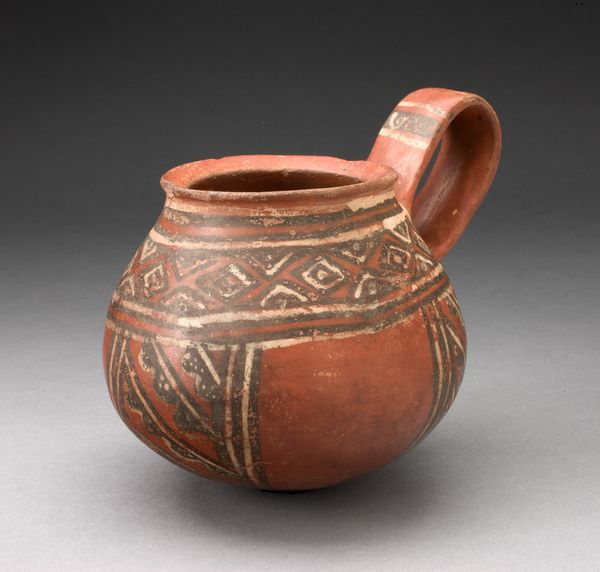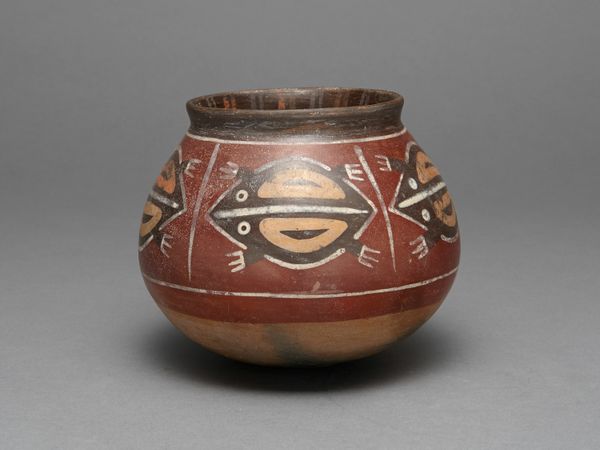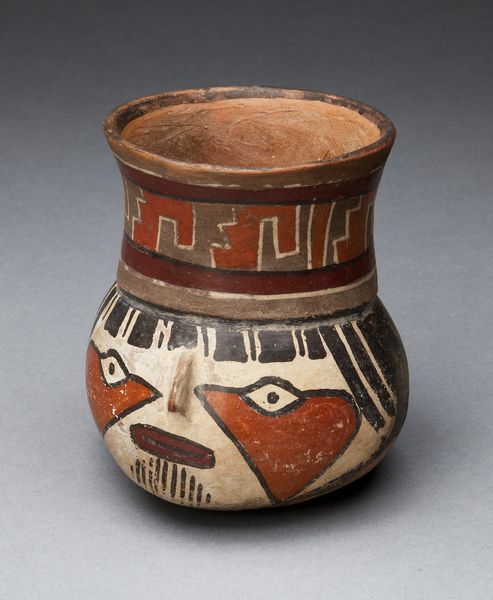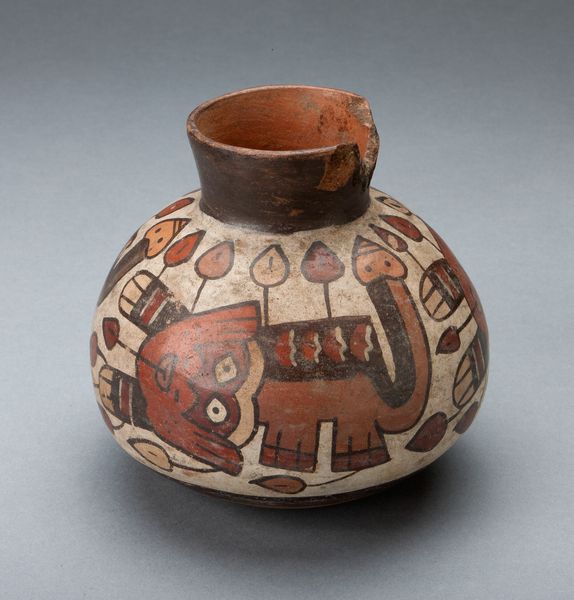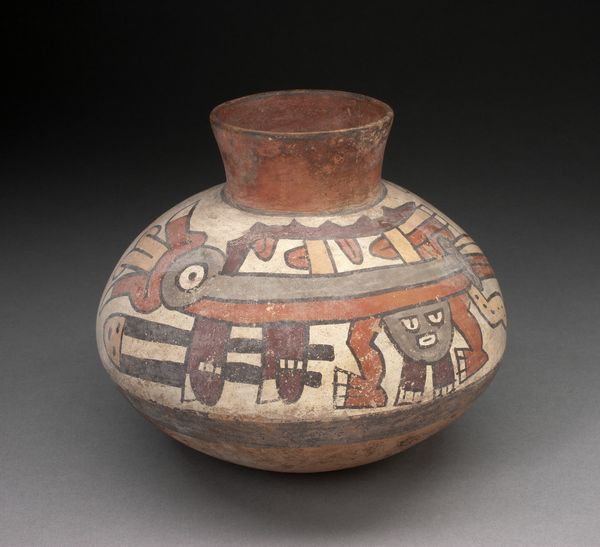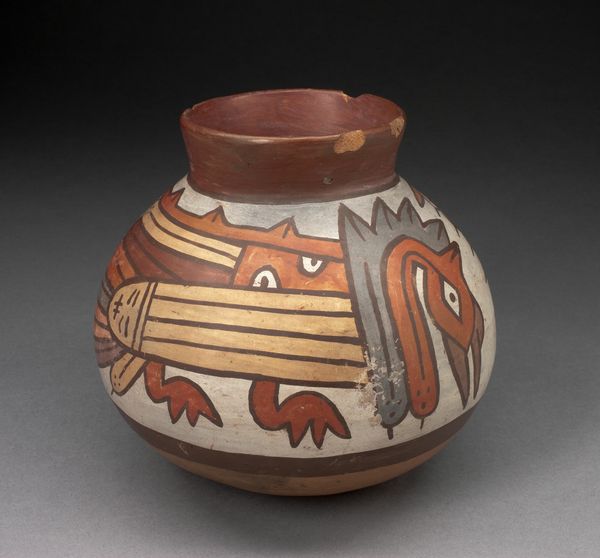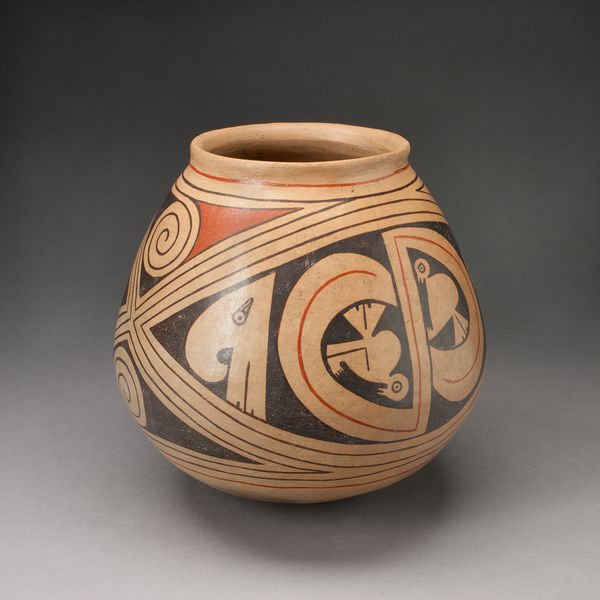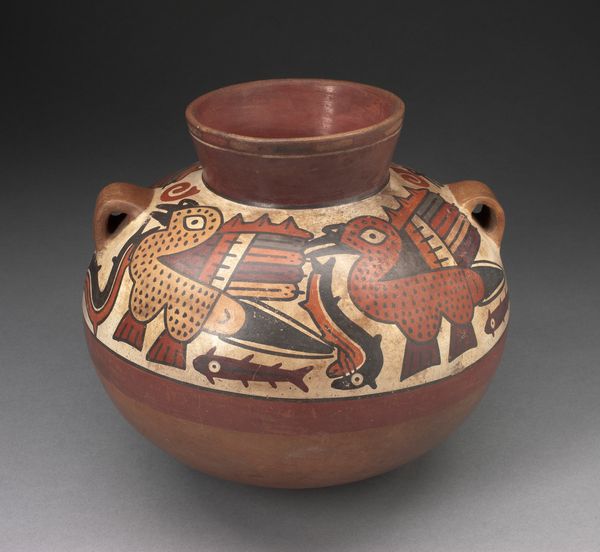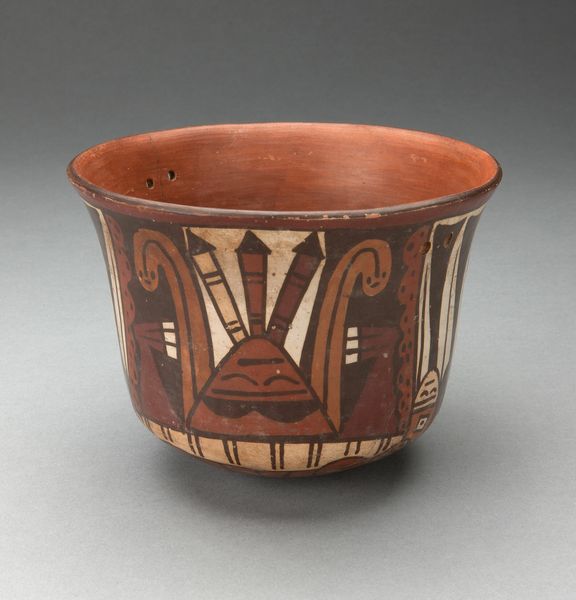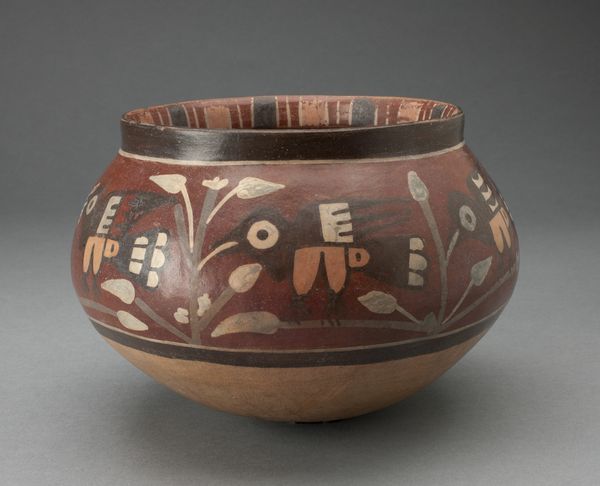
ceramic, earthenware
#
ceramic
#
earthenware
#
geometric
#
ceramic
#
indigenous-americas
Dimensions: 35.6 × 38.1 cm (14 × 15 in.)
Copyright: Public Domain
Curator: Looking at this ceramic jar, possibly dating back to 1300-1400 and attributed to the Cibola culture, the patterns give me a sense of groundedness. Editor: I see that, but I'm immediately struck by its energetic movement. The spiral motifs give it such a dynamic presence despite its simple form. Curator: Indeed! Spirals are a potent symbol in many cultures. They can represent growth, evolution, the cyclical nature of life. Here, they almost seem to contain or channel the jar's energy. And if you follow the steps pattern that surround the upper area you sense a moving, visual narrative that brings forward a story, or the presence of more worlds above and beyond. Editor: That’s an interesting take. I also see the vessel's form itself playing into a cultural narrative about holding, nurturing, or communal sharing. Are those individual expressions or conventional, inherited iconography? Curator: Most likely the latter; we need to respect the traditional knowledge passed down, the continuity of a community's worldview expressed through repeated symbols over generations. These earthenwares and geometric patterns form visual cultural scripts that contain a specific set of historical data. Editor: It begs the question then, of what histories were prioritized, what viewpoints dominated. The designs are captivating, but what specific voices were suppressed within its creation and its intended functions. Curator: It’s possible to think of how traditional cultural memories or indigenous technologies are preserved when repeated, the design and its symbolism in a way act as anchors for the culture’s history, carrying narratives beyond generations. Editor: Absolutely. Considering this piece in our current gallery space, it pushes us to decolonize our understandings, actively questioning whose stories get centered in museums. It also points out the painful cultural dislocation due to colonial violences against ancestral traditions and ways of living. Curator: True, art provides ways to deconstruct colonial paradigms and make ancestral wisdom visible again. In our modern times we need new dialogues, open cultural negotiations to appreciate ancestral works in respectful ways that promote inclusive representation, understanding the art with an open mind and an intent to understand and appreciate rather than to dominate. Editor: In the end, recognizing the complex socio-political history makes our observation richer and enables us to create art-related discussions in order to encourage empathy, decolonization, and cross-cultural collaborations. It should guide actions against all kinds of social inequities for present and future generations.
Comments
No comments
Be the first to comment and join the conversation on the ultimate creative platform.
